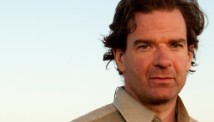NEW YORK (AP) — Steroid-tainted stars Barry Bonds, Roger Clemens and Sammy Sosa were denied entry to baseball's Hall of Fame, with voters failing to elect any candidates for only the second time in four decades.
In a vote that keeps the game's career home run leader and one of its greatest pitchers out of Cooperstown — at least for now — Bonds received just 36.2 percent of the vote and Clemens 37.6 in totals announced Wednesday by the Hall and the Baseball Writers' Association of America, both well short of the 75 percent necessary. Sosa, eighth on the career home run list, got 12.5 percent.
"Curt Schilling made a good point, everyone was guilty. Either you used PEDs, or you did nothing to stop their use," Hall of Famer Mike Schmidt said in an email to The Associated Press. "This generation got rich. Seems there was a price to pay."
Bonds, Clemens and Sosa were eligible for the first time and have up to 14 more years on the writers' ballot to gain baseball's highest honor.
"After what has been written and said over the last few years I'm not overly surprised," Clemens said in a statement he posted on Twitter.
Craig Biggio, 20th on the career list with 3,060 hits, topped the 37 candidates with 68.2 percent of the 569 ballots, 39 shy of election. Among other first-year eligibles, Mike Piazza received 57.8 percent and Schilling 38.8.
Jack Morris led holdovers with 67.7 percent. He will make his final ballot appearance next year, when fellow pitchers Greg Maddux and Tom Glavine along with slugger Frank Thomas are eligible for the first time.
Two-time NL MVP Dale Murphy received 18.6 percent in his 15th and final appearance.
"With 53 percent you can get to the White House, but you can't get to Cooperstown," BBWAA secretary-treasurer Jack O'Connell said. "It's the 75 percent that makes it difficult."
It was the eighth time the BBWAA failed to elect any players. There were four fewer votes than last year and five members submitted blank ballots.
"It's a tough period for evaluation, that's what this chalks up to," Hall President Jeff Idelson said. "Honestly, I think that any group you put this to would have the same issues. ... There's always going to be discussion and concern about players who didn't get in, but at the end of the day it's a process and again, a snapshot in time isn't one year, it's 15 with this exercise."
Bonds, baseball's only seven-time Most Valuable Player, hit 762 home runs, including a record 73 in 2001.
"It is unimaginable that the best player to ever play the game would not be a unanimous first-ballot selection," said Jeff Borris of the Beverly Hills Sports Council, Bonds' longtime agent.
Clemens, the only seven-time Cy Young Award winner, is third in career strikeouts and ninth in wins.
"To those who did take the time to look at the facts," Clemens said, "we very much appreciate it."
Since 1961, the only years the writers didn't elect a candidate were when Yogi Berra topped the 1971 vote by appearing on 67 percent of the ballots cast and when Phil Niekro headed the 1996 ballot at 68 percent. Both were chosen the following years when they achieved the 75 percent necessary for election.
The other BBWAA elections without a winner were in 1945, 1946, 1950, 1958 and 1960.
"Next year, I think you'll have a rather large class and this year, for whatever reasons, you had a couple of guys come really close," Commissioner Bud Selig said at the owners' meetings in Paradise Valley, Ariz. "This is not to be voted to make sure that somebody gets in every year. It's to be voted on to make sure that they're deserving. I respect the writers as well as the Hall itself. This idea that this somehow diminishes the Hall of baseball is just ridiculous in my opinion."
Players' union head Michael Weiner called the vote "unfortunate, if not sad."
"To ignore the historic accomplishments of Barry Bonds and Roger Clemens, for example, is hard to justify. Moreover, to penalize players exonerated in legal proceedings — and others never even implicated — is simply unfair. The Hall of Fame is supposed to be for the best players to have ever played the game. Several such players were denied access to the Hall today. Hopefully this will be rectified by future voting."
Three inductees were chosen last month by the 16-member panel considering individuals from the era before integration in 1947: Yankees owner Jacob Ruppert, umpire Hank O'Day and barehanded catcher Deacon White. They will be enshrined during a ceremony in Cooperstown on July 28, when the Hall also will honor Lou Gehrig and Rogers Hornsby among a dozen players who never received formal inductions because of restrictions during World War II.
Bonds has denied knowingly using performance-enhancing drugs and was convicted of one count of obstruction of justice for giving an evasive answer in 2003 to a grand jury investigating PEDs. Clemens was acquitted of perjury charges stemming from congressional testimony during which he denied using PEDs.
Sosa, who finished with 609 home runs, was among those who tested positive in MLB's 2003 anonymous survey, The New York Times reported in 2009. He told a congressional committee in 2005 that he never took illegal performance-enhancing drugs.
The BBWAA election rules say "voting shall be based upon the player's record, playing ability, integrity, sportsmanship, character, and contributions to the team(s) on which the player played."
An Associated Press survey of 112 eligible voters conducted in late November after the ballot was announced indicated Bonds, Clemens and Sosa would fall well short of 50 percent. The big three drew even less support than that as the debate raged over who was Hall worthy.
Voters are writers who have been members of the BBWAA for 10 consecutive years at any point.
BBWAA president Susan Slusser of the San Francisco Chronicle said she didn't vote for Bonds, Clemens or Sosa.
"The evidence for steroid use is too strong," she said.
As for Biggio, "I'm surprised he didn't get in."
MLB.com's Hal Bodley, the former baseball columnist for USA Today, said Biggio and others paid the price for other players using PEDs.
"They got caught in the undertow of the steroids thing," he said.
Bodley said this BBWAA vote was a "loud and clear" message on the steroids issue. He said he couldn't envision himself voting for stars linked to drugs.
"We've a forgiving society, I know that," he said. "But I have too great a passion for the sport."
Mark McGwire, 10th on the career home run list, received 16.9 percent on his seventh try, down from 19.5 last year. He received 23.7 percent in 2010 — a vote before he admitted using steroids and human growth hormone.
Rafael Palmeiro, among just four players with 500 homers and 3,000 hits along with Hank Aaron, Willie Mays and Eddie Murray, received 8.8 percent in his third try, down from 12.6 percent last year. Palmeiro received a 10-day suspension in 2005 for a positive test for performance-enhancing drugs, claiming it was due to a vitamin vial given to him by teammate Miguel Tejada.
While there are exhibits about the Steroids Era at the Hall, the plaque room will remain without Bonds and Clemens, who join career hits leader Pete Rose on the outside looking in. There were four write-in votes for Rose, who never appeared on the ballot because of his lifetime ban that followed an investigation of his gambling while manager of the Cincinnati Reds.
Morris increased slightly from his 66.7 percent last year, when Barry Larkin was elected. Morris could become the player with the highest-percentage of the vote who is not in the Hall, a mark currently held by Gil Hodges at 63 percent in 1983.
Several players who fell just short in the BBWAA balloting later were elected by either the Veterans Committee or Old-Timers' Committee: Nellie Fox (74.7 percent on the 1985 BBWAA ballot), Jim Bunning (74.2 percent in 1988), Orlando Cepeda (73.6 percent in 1994) and Frank Chance (72.5 percent in 1945).
The ace of three World Series winners, Morris had 254 victories and was the winningest pitcher of the 1980s. His 3.90 ERA, however, is higher than that of any Hall of Famer.
___
AP Sports Writers Mike Fitzpatrick, John Marshall and Ben Walker contributed to this report.



